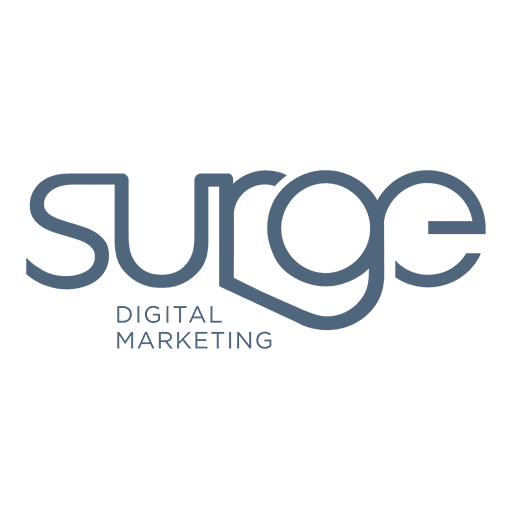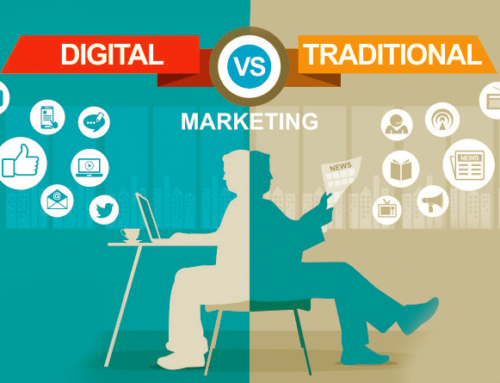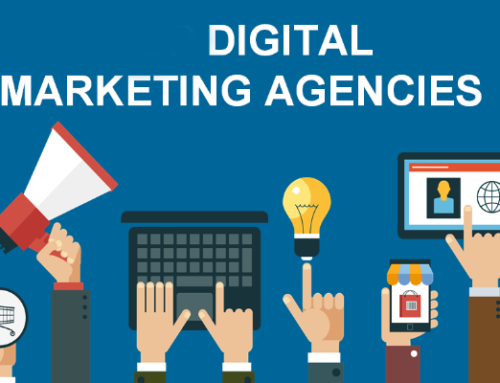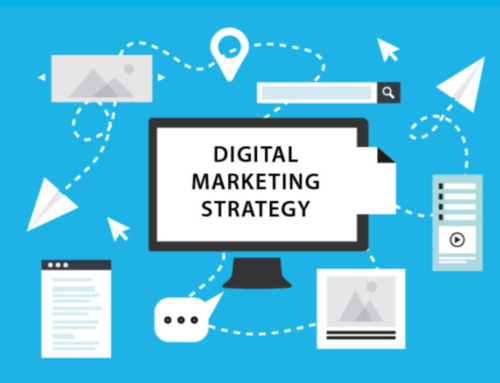Gone are the days where billboards and newspaper ads were the most effective means of promoting your brand and your products. Digital marketing is a necessity for all businesses and selecting the right strategies will be key to your success.
LIMITED TIME OFFER – GET A FREE 30-MINUTE STRATEGY SESSION
There are a lot of options when it comes to digital marketing, however, and it can be stressful if not downright panic-inducing to try to figure out where to start.
DOWNLOAD THE SURGE DIGITAL ‘5 Ways to Grow Your Business in 90 Days’ EBOOK
In this post, we’re going to go over how to create a digital marketing strategy from scratch that will be comprehensive and help you accomplish specific goals of your choice.
1. DETERMINE WHAT YOU WANT TO ACCOMPLISH
What do you want your digital marketing campaigns to accomplish? Do you want to build name brand recognition? Generate leads? Get more sales, or email subscribers?
Great! Whatever it is that you want, though, you need to name it.
This is yet another way that marketing has an online dating crossover comparison. If you go on a bunch of blind dates with no idea what you’re looking for, you might settle down with the first person who you can tolerate. If you have an actual list of traits you want in a person, you’re much more likely to find your match.
Your goals matter, and you’ll need to take specific steps to accomplish each one. We’ll look at this more in-depth a little further down.
2. UNDERSTAND THE DIGITAL SALES FUNNEL
The digital sales funnel is an important marketing concept that you need to grasp before actually developing your strategy. It is made up of several different steps that buyers move through in order to get to the point of purchasing and/or becoming long term customers.
Depending on who you ask, the stages may vary in number and in their exact name, but they generally include the following:
- Discovery. People hear of your brand or product for the very first time ever.
- Research/consideration. Some name brand recognition has been established, and the user is willing to look into your products or services to learn more. They may also research your competitors at this stage.
- Purchase. Users are willing to become customers and purchase from you at this point.
- Loyalty. Repeat clients may become loyal to your brand or product and eventually may become advocates for your brand.
Users who are at the discovery stage aren’t going to respond in the same way to an ad as someone who is at the loyalty stage. They’ll be interacting with your brand in different ways and on different platforms, and your digital marketing strategy will need to be tailored to keep that in mind.
3. CREATE BUYER PERSONAS
The next step you’ll need to take in order to create your strategy is to get a solid understanding of who your audience is and what motivates them. This will be essential, because it will help you to assess which marketing platforms you can find them on, how they’re interacting with it and what they want to see from you.
Buyer personas should be specific. You don’t want to just say “young moms” as a persona and be done with it. You want to have “Supermom Mary, 25-29 with at least one kid under the age of five who is on a budget in a middle class home. She’s trying to be a good mom and wife but finds personal satisfaction in working. She tries to live an organic lifestyle. but does a McDonald’s run on busy weeknights.” This is going to tell you a lot more about your audience, their pain points and what you can do for them.
It’s important to note that your buyer personas should absolutely be based on research. Skip the thinly-veiled stereotypes and instead use the analytics that you already have available, including Google Analytics and Facebook’s Audience Insights.
4. DETERMINE WHERE TO FIND USERS AT ALL FUNNEL STAGES
You’ve got a good understanding of who your audience is, so now you’ll want to understand how and where to connect with them. Again, refer to your analytics on this and cross-reference them with your buyer personas.
Let’s say you run a home renovation contacting company. You do everything from repairing water damaged floors to giving people the kitchen of their dreams. There’s a good chance that you’re going to have very diverse audiences at all stages of the funnel looking to find you.
Here are a few examples of how they might:
- Someone who is taking a lot of time to plan an expensive bathroom remodel might discover you by googling phrases like “bathroom design ideas” or searching on Pinterest. If they find your blog post featuring images of remodels you’ve done, that could be how they discover you and look to hire you.
- A person whose home was flooded after a leaky pipe is going to be looking for someone right now to come fix that flooring before the mold sets in. Your best bet will be to connect with them through Google Ads, because they’ll be searching for those services and you want to be competitive.
- Some customers are feeling just okay about that run down bathtub but don’t have the money to fix it. You run a Facebook Ad campaign showing how affordable and high quality refinishing tiles or glazing tubs could be and create a demand for someone who wasn’t otherwise looking.
- A past customer is thrilled with the work you did installing recessed lighting into their home. You follow up through email to let them know that you’re offering a special on home security upgrades, and they get in touch.
Consider all paid and organic marketing channels and think about which of your audience members are using them and what stage of the funnel they’re in. This will help you determine the marketing channels you should be on and who you’ll want to be targeting in each part of your digital marketing strategy.
5. IMPLEMENT SPECIFIC GUIDELINES TO REACH YOUR GOALS
You’ve got your marketing mix selected and you know how you expect your audience to react. Once you do this, it’s time to start tying everything together and create specific tactics that will help you reach those end goals.
A few of these tactics might include:
- Placing lead generation widgets or lead magnets on the sides of all blog posts, along with featuring a CTA at the end of posts to get in touch.
- Sharing influencer’s content on social media in order to build a relationship and increase visibility and brand recognition.
- Encouraging testimonials with email plugins that you can then place on your site, or request that users submit reviews on Google business to improve your local SEO scores.
Again, specificity is key here. Map out very specific steps that you’re going to take in order to accomplish your goals. Go beyond “write blog posts to attract leads,” and include those CTAs and links back to a lead magnet or a webinar until you start to get results.
6. INCORPORATE AUTOMATION & PERSONALIZATION
As you get your campaigns up and running, you’ll want to find ways to continue to make your campaigns as impactful and effective as possible.
There are two good ways to do this: more personalization and more automation. And in many cases, these two can overlap.
Sometimes, the most seemingly-personalized and relevant marketing messages that your audience will get will be delivered as a result of their specific actions. This includes ads that utilize retargeting to show users products they’ve viewed on your site, or triggered email autoresponders that show customers similar products to what they’ve seen in the past.
Utilize audience segmentation, personalization, and automation wherever possible to write focused copy for specific groups of people and their exact relationship with your business. They’ll see the message at the ideal time and it will be exceedingly relevant to their needs at that moment. This will take your strategy one step further.
7. LOOK FOR HOLES IN YOUR DIGITAL MARKETING STRATEGY
I lovingly refer to this final step as “troubleshooting” your funnel. Your digital marketing strategy is up and running. Both in the early days and on a long-term basis, you’ll want to carefully evaluate how your strategy is working. Since there’s often multiple elements, platforms, and campaigns involved, this can be tricky.
Google Analytics is a big help here, along with the native analytics of the networks and channels you’re utilizing. You want to evaluate how customers and leads are interacting with your campaigns, and how that’s translating into helping you reach your goals. It doesn’t matter much if your blog post was shared 5,000 times in two days if you didn’t get a single lead or sale, and that was the whole point.
Set up goals in Google Analytics and check out behavior maps to look out for drop off points in your on-site funnel. You can do the same with pretty much any platform. Are you getting a lot of clicks on a PPC ad but then no conversions, or opens on an email with no clicks? Look at why. Find the place where users are dropping off and look for any tell-tale clues that could be the reason. Run a few tests and see what you can learn.
CONCLUSION
While it may seem tempting to just dive in and get started on as many platforms as once, telling yourself you’ll figure out the details later, you’re really just shooting yourself in the foot. Running any type of marketing campaign (even just search engine optimization) without specific goals in mind isn’t like walking around in Paris without a GPS—it’s more like getting into a sailboat with no map, where you’re likely to get stuck floating somewhere at sea.
Without a digital marketing strategy, you’re not going to see results because you don’t have the right content in place to actually get the results. And trust me, with all that time and money you’ve invested, that’s the last thing that you want.
By Ana Gotter – Source: Disruptive Advertising










